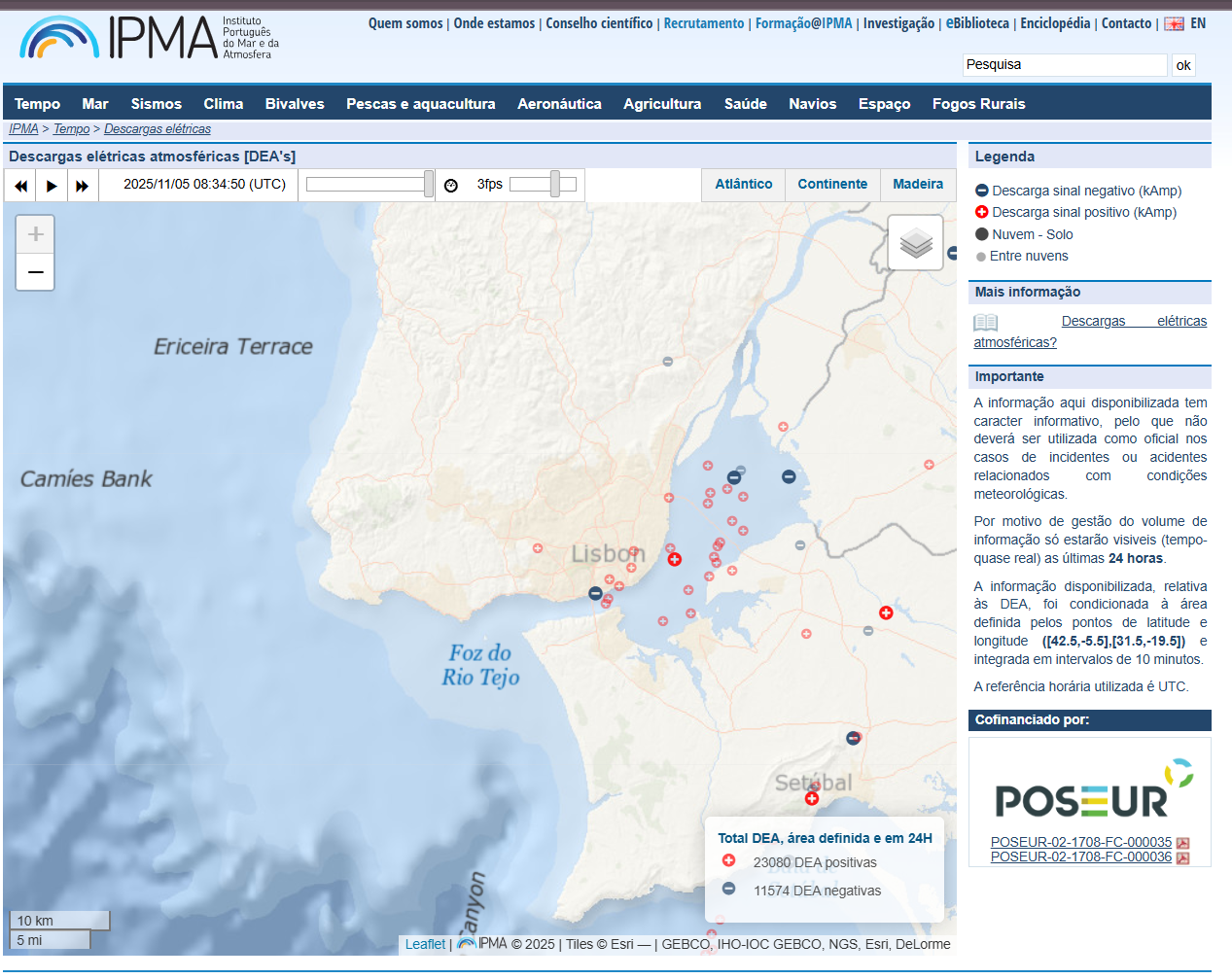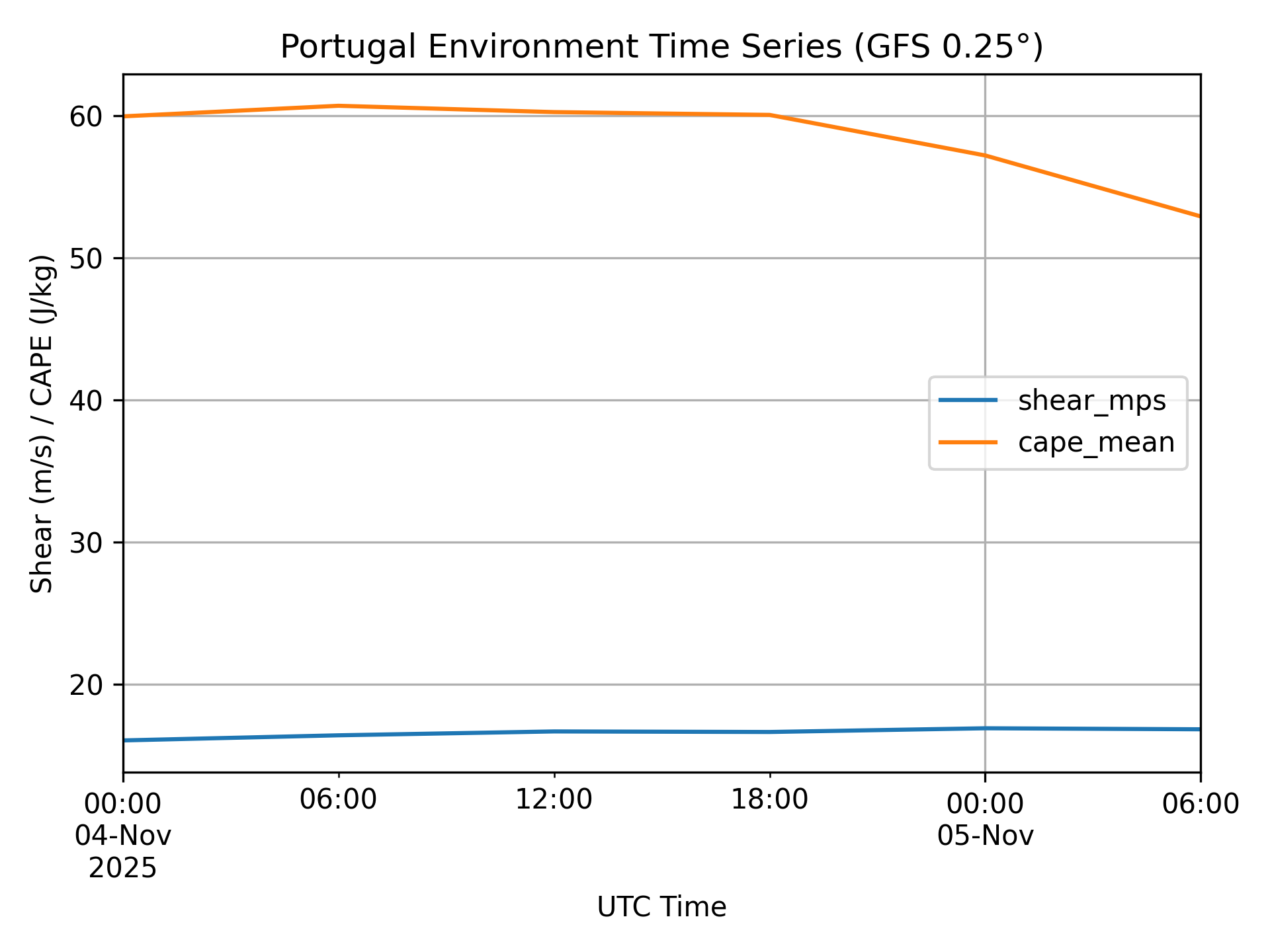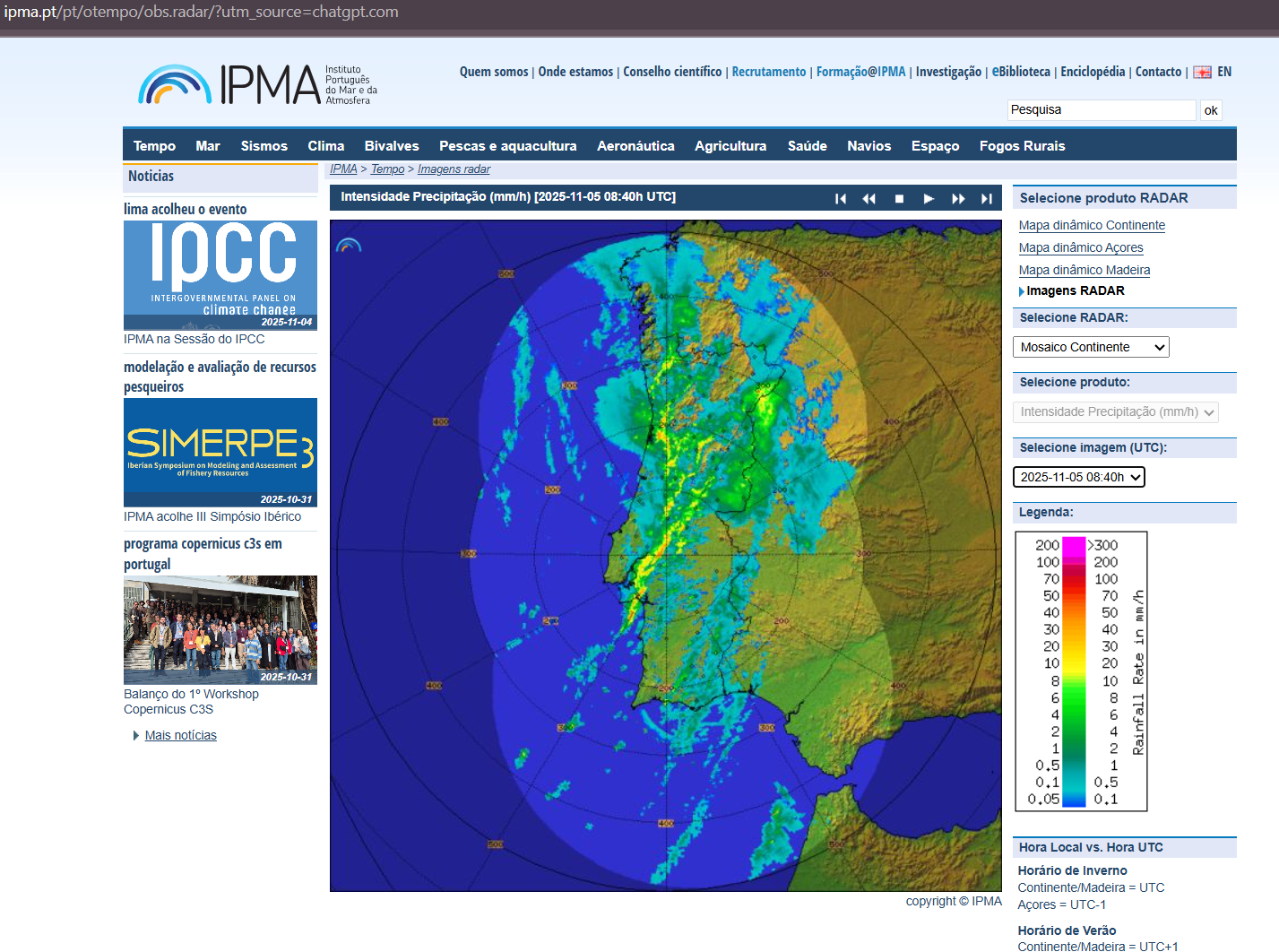Positive Lightning Dominance over Portugal (4–5 November 2025)
Author: Cristian Iordache. Location: Cascais, Portugal.
Abstract
Between 4 and 5 November 2025, the IPMA lightning detection network reported an unusually high ratio of positive to negative cloud-to-ground (CG) flashes over mainland Portugal. In the initial 24-hour period, 23,080 positive and 11,574 negative CG flashes were recorded; by 23:45 UTC on 5 November, totals had reached approximately 37,000 positive and 18,000 negative flashes, yielding a positive-polarity fraction of ≈67%. This note documents the event and characterizes the environment using GFS 0.25° analyses, EUMETSAT imagery, and IPMA radar. Persistent deep-layer shear near 16–17 m/s combined with localized high instability suggests organized convection with extensive stratiform anvils and a dominance of positive CG. The magnitude and duration of the polarity imbalance appear unprecedented for the Iberian Peninsula.

1. Observations
Polarity totals were taken from the operational IPMA DEA page (rolling 24 h window; accessed 05 Nov 2025). The operational domain covers mainland Portugal and adjacent Atlantic areas. Screenshots and animations show significant electrical activity over the central coast and offshore.
2. Environmental context
NOAA GFS 0.25° analysis fields were used at 00/06/12/18 UTC on 4 Nov and 00/06 UTC on 5 Nov 2025. Deep-layer shear (0–6 km, approximated via 925 and 500 hPa winds) persisted at 16–17 m/s. Domain mean CAPE held near 50–60 J/kg with localized maxima greater than 2000 J/kg near coastal convergence.


3. Discussion
The combination of persistent deep-layer shear and localized instability suggests an organized convective system with extensive stratiform shields and cold cloud tops, favoring asymmetric charge separation and positive CG dominance. This pattern is consistent with prior case studies in sheared convection and mature or decaying MCS stages.
4. Conclusions
This preliminary note documents a rare case of positive CG dominance over mainland Portugal. Hourly polarity data from IPMA, when available, will allow a quantitative link between storm structure and positive CG fraction. Results support further peer-reviewed publication.
Preprint available at Zenodo: https://doi.org/10.5281/zenodo.17538198
Submitted to: Weather – The International Journal of Meteorology (RMetS), November 2025.

